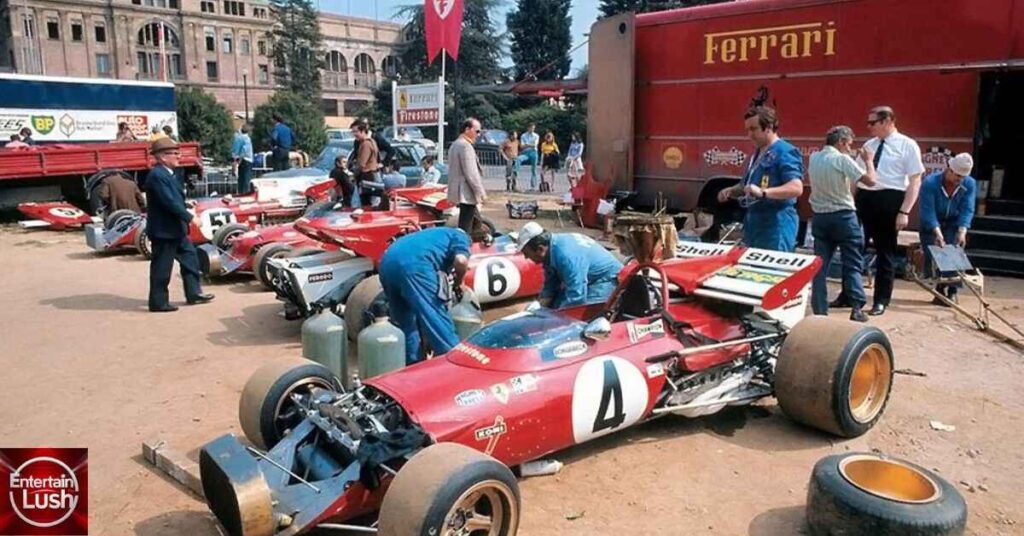The untold story of WWII F1 Ferraris stranded in New Jersey reveals a fascinating chapter in racing history. During the chaos of World War II, these prized Italian race cars found themselves unexpectedly abandoned on American soil. This incident highlights the far-reaching impact of global conflict on the world of motorsports.
The tale of these marooned Ferraris not only sheds light on a unique wartime occurrence but also illustrates the resilience and adaptability of the racing industry. Uncovering this forgotten episode provides valuable insights into the evolution of Formula One and its enduring legacy.
The Pre-War Glory of Ferrari
Ferrari’s story began in 1929 when Enzo Ferrari founded Scuderia Ferrari. Initially, the team raced Alfa Romeo cars. In the 1930s, Ferrari’s reputation grew quickly. They won numerous races across Europe. By the late 1930s, Ferrari was a major force in motorsports. Their cars were known for speed and reliability. Enzo Ferrari’s vision and engineering skills drove the company’s success. This period laid the foundation for Ferrari’s future dominance in Formula One racing.
Ferrari’s Early Days
Enzo Ferrari started Scuderia Ferrari in 1929. The team began by racing Alfa Romeo cars. They quickly gained success in various European races. In the early 1930s, Ferrari became Alfa Romeo’s official racing division. This partnership boosted Ferrari’s reputation and resources. By 1933, Scuderia Ferrari was managing Alfa’s entire racing program. This period was crucial for developing Ferrari’s racing expertise and technical knowledge.
Ferrari’s Rise to Prominence
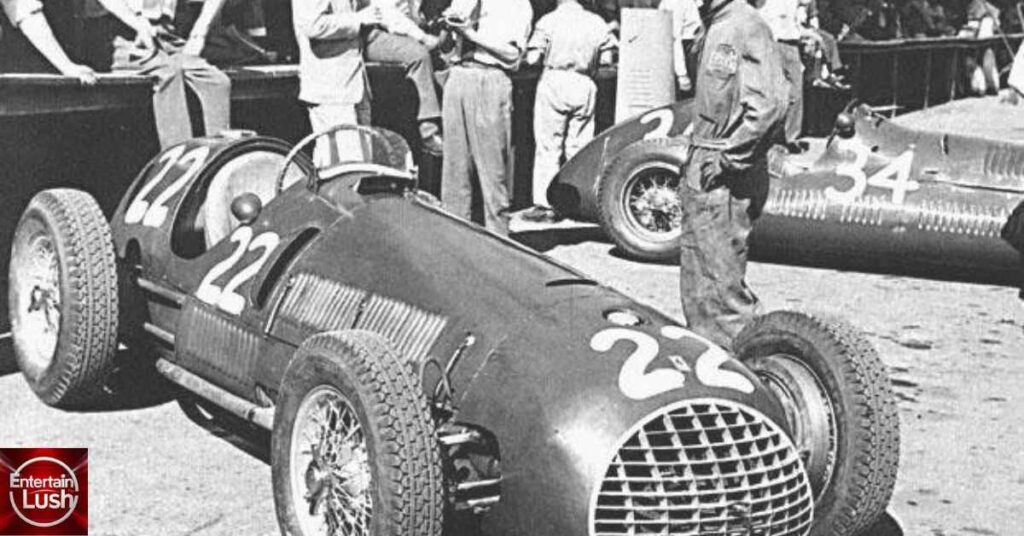
From 1935 to 1939, Ferrari dominated European racing. They won numerous Grand Prix events across the continent. The team’s cars were consistently fast and reliable. Ferrari’s success attracted top drivers and engineers. By 1938, they were considered the team to beat in motorsports. Their victories in prestigious races like the Mille Miglia cemented their status. This era established Ferrari as a major player in pre-war racing.
The Development of Ferrari’s F1 Prototypes
In the late 1930s, Ferrari began developing its own race cars. These early designs laid the groundwork for future F1 cars. Ferrari focused on lightweight construction and powerful engines. They experimented with aerodynamics and suspension systems. By 1940, Ferrari had produced several promising prototypes. These cars incorporated innovative features that would influence post-war F1 design. Ferrari’s engineering team pushed the boundaries of racing technology during this period.
The Birth of Formula One Racing
Formula One’s roots trace back to the European Grand Prix races of the 1920s and 1930s. These events featured powerful cars and skilled drivers competing on challenging circuits. In 1946, the FIA standardized rules for a world championship. This laid the foundation for modern F1 racing. The first official F1 season took place in 1950. It marked the beginning of a new era in motorsports.
The Evolution of Grand Prix Racing
Races became more organized and professional. New circuits were built across Europe. Technological advances led to faster and more sophisticated cars. By the late 1930s, Grand Prix events attracted large crowds and media attention. The sport’s growing popularity set the stage for the creation of Formula One. This period saw the emergence of iconic races like the Monaco Grand Prix.
Key Figures in Early F1
Several individuals shaped early Formula One racing. Drivers like Tazio Nuvolari and Bernd Rosemeyer became legends. Team owners such as Enzo Ferrari and Alfred Neubauer built powerful racing organizations. Engineers like Ferdinand Porsche pioneered new technologies. These figures contributed to F1’s rapid development in the pre-war years. Their innovations and achievements laid the groundwork for the sport’s future success.
The First F1 Regulations
In 1946, the FIA established the first Formula One rules. These regulations defined the basics of F1 racing. They set limits on engine size and car weight. The rules also specified fuel types and race formats. Safety standards were introduced for drivers and tracks. These initial regulations aimed to create fair and exciting competitions. They also encouraged technical innovation within set boundaries. These rules formed the foundation for modern F1 racing.
World War II Erupts: The Pause in F1 Racing
World War II brought European motorsports to a halt in 1939. Racing events were canceled across the continent. Car manufacturers shifted focus to military production. Many racetracks were abandoned or repurposed for war efforts. The development of new racing technologies stopped. This period marked a significant pause in the evolution of Formula One. The war’s impact on motorsports would be felt for years to come.
The Outbreak of War and Its Immediate Effects
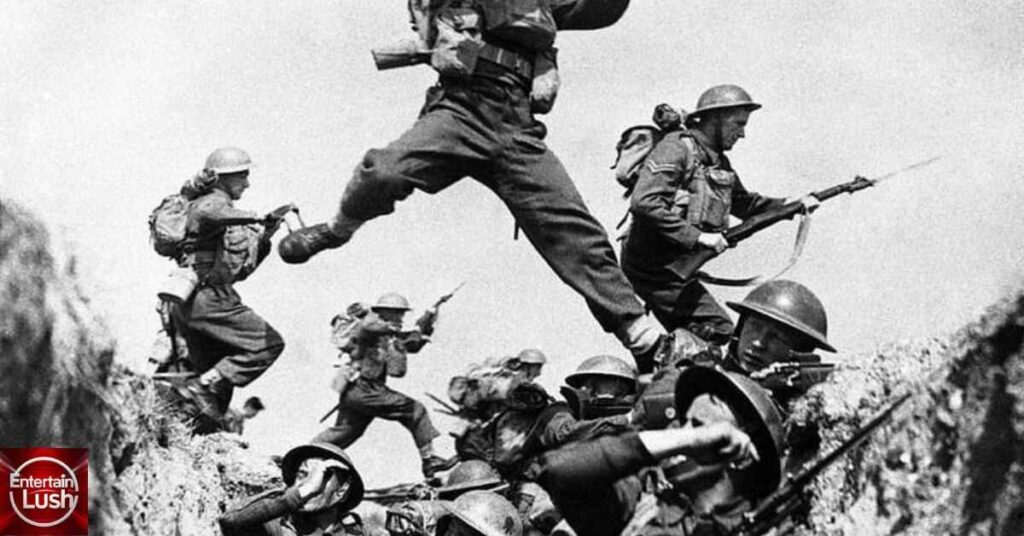
When World War II began in September 1939, it immediately impacted racing. All major European races were canceled. Teams disbanded as countries mobilized for war. Car development for racing purposes ceased. Many drivers and engineers joined the military. Racing facilities were closed or converted for war use. The outbreak of war effectively ended the pre-war racing era. It would be years before organized motorsports could resume in Europe.
The Fate of Racing Teams and Drivers
World War II scattered racing teams and drivers. Many drivers joined their country’s military forces. Some, like British driver Richard Seaman, died in combat. Others used their skills in different ways. For instance, some became test pilots or vehicle designers for the military. Engineers from racing teams often worked on military projects. The war years forced many in the racing world to adapt to new roles and challenges.
The Curious Case of F1 Ferraris in New Jersey
In 1940, several Ferrari race cars were unexpectedly stranded in New Jersey. They had been shipped to the U.S. for an exhibition just before Italy entered the war. When Italy joined the Axis powers, these cars couldn’t return to Europe. They remained in storage throughout the war years. This unusual situation preserved these pre-war Ferraris, unintentionally saving a piece of racing history. The story of these stranded cars highlights the war’s far-reaching impact on motorsports.
How the Ferraris Ended Up in New Jersey
In early 1940, Ferrari shipped several race cars to the United States for an exhibition. These cars arrived in New York harbor just before Italy entered World War II. When Italy joined the Axis powers in June 1940, the U.S. government froze Italian assets. This included the Ferrari race cars. Unable to return to Europe, the cars were moved to storage in New Jersey. This unexpected turn of events left valuable racing machines stranded far from home.
The Discovery of the Stranded Ferraris
The Ferrari race cars remained forgotten in New Jersey throughout World War II. In late 1945, after the war ended, racing enthusiasts learned about these stranded cars. Word spread quickly in the American racing community. Collectors and racing teams became interested in these pre-war Ferraris. The discovery created excitement among those eager to see European racing technology. It also highlighted the unusual situations created by the war’s disruption of international sports.
The Condition of the Stranded F1 Ferraris
After five years in storage, the Ferrari race cars were in surprisingly good condition. The dry, cool storage environment helped preserve them. Some parts showed signs of age, like dried-out rubber and faded paint.
However, the engines and chassis remained intact. The cars needed work to run again, but they were far from ruined. This preservation was a stroke of luck for racing history. It allowed these pre-war racing machines to survive the conflict largely unscathed.
The Impact of WWII on the F1 Racing Industry
World War II significantly changed the Formula One racing industry. The war years halted racing development in Europe. However, it also led to new technologies that would later benefit racing. After the war, F1 faced challenges in rebuilding. But it also had opportunities to incorporate wartime innovations. The post-war period saw a resurgence of interest in motorsports. This led to the formal establishment of Formula One in 1950.
Technological Advancements from Wartime
World War II accelerated technological progress in many areas. These advancements later benefited F1 racing. Improved aerodynamics from aircraft design influenced car shapes. Stronger, lighter materials developed for military use enhanced car construction. Advances in fuel technology led to more powerful racing engines. Wartime innovations in tires and suspension systems also found their way into F1 cars. These military-derived technologies helped F1 cars become faster and safer after the war.
The Restructuring of International Racing
After World War II, international racing needed reorganization. In 1946, the FIA (Fédération Internationale de l’Automobile) was formed. This body established new rules for Formula One racing. They created a standardized World Championship format. New safety regulations were introduced. The first official F1 World Championship race was held in 1950 at Silverstone, UK. This restructuring set the stage for modern Formula One racing.
Economic Challenges in Reviving F1
Reviving Formula One after World War II faced significant economic hurdles. Many European countries were rebuilding from war damage. This left limited resources for motorsports. Race teams struggled with tight budgets. Finding sponsors was difficult in the post-war economy. Despite these challenges, passion for racing drove the sport’s revival. Gradually, as economies recovered, more resources became available for F1. By the 1950s, Formula One was growing into a major international sport.
The Rise of American Motorsports During the War
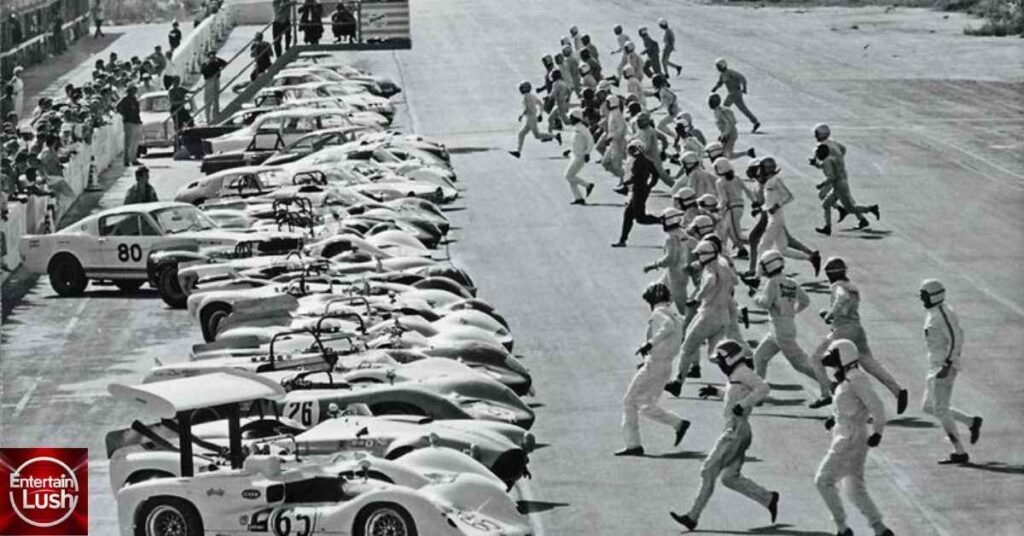
While European racing paused during World War II, American motorsports continued. U.S. tracks were not affected by the war in Europe. American races drew larger crowds as other entertainment options decreased.
This period saw the growth of stock car racing, which later became NASCAR. Midget car racing also gained popularity. The continued racing activity in America helped maintain public interest in motorsports. It also provided a haven for some European racing technology during the war years.
American Racing Continues Despite Global Conflict
From 1941 to 1945, American racing thrived while Europe’s tracks were silent. U.S. races continued with modifications for wartime conditions. Races often supported war bond drives or military charities. Domestic circuits like Indianapolis maintained their events.
Local and regional races grew in popularity. This continuity helped preserve racing culture and skills. It also positioned America as a strong force in post-war international motorsports. The U.S. racing scene emerged from the war years stronger than ever.
The Influence of Stranded European Race Cars
The presence of stranded European race cars, like the Ferraris in New Jersey, had a significant impact on American racing. From 1940 to 1945, these cars provided U.S. engineers and drivers with direct access to advanced European technology.
American teams studied these vehicles, learning about their design and engineering. This knowledge transfer influenced the development of U.S. race cars. The stranded Ferraris also sparked interest in European racing among American enthusiasts. This exposure would shape the future of American motorsports after the war.
Post-War Boom in American Motorsports
After World War II, American motorsports experienced rapid growth. From 1946 to 1950, new race tracks opened across the country. NASCAR was founded in 1948, formalizing stock car racing. Drag racing gained popularity in the late 1940s. The Indianapolis 500 resumed in 1946, drawing large crowds.
This boom was fueled by returning veterans with mechanical skills and a taste for excitement. Improved roads and more affordable cars also contributed to the sport’s expansion. American motorsports emerged from the war stronger and more diverse.
Read This Blog: Carlyle Gordon: The Ultimate Guide to Lifestyle Products
The Return of Ferrari to the International Stage
Ferrari returned to international racing soon after World War II ended. In 1947, the first Ferrari-badged car debuted at the Piacenza Circuit. Enzo Ferrari focused on rebuilding his team and developing new race cars. By 1950, Ferrari was ready for the inaugural Formula One World Championship. The company’s quick return showcased its resilience and commitment to racing. Ferrari’s post-war efforts laid the foundation for its future dominance in F1.
Reclaiming the Stranded F1 Ferraris
In 1946, Ferrari began efforts to reclaim its cars stranded in New Jersey. The process involved complex negotiations with U.S. authorities. Some cars were sold to American collectors and racers. Others were shipped back to Italy for restoration. The recovery of these vehicles was crucial for Ferrari’s historical records. It also provided valuable data for developing new race cars. The return of these Ferraris symbolized the revival of international motorsports after the war.
Ferrari’s Post-War Racing Strategy
After World War II, Ferrari adopted an aggressive racing strategy. The company focused on developing cutting-edge technology for its cars. Ferrari also recruited top drivers from around the world. They entered multiple racing categories to maximize exposure and experience. This approach aimed to quickly re-establish Ferrari as a leading force in motorsports. The strategy emphasized innovation and performance, setting the tone for Ferrari’s future in Formula One.
Early Post-War Successes for Ferrari
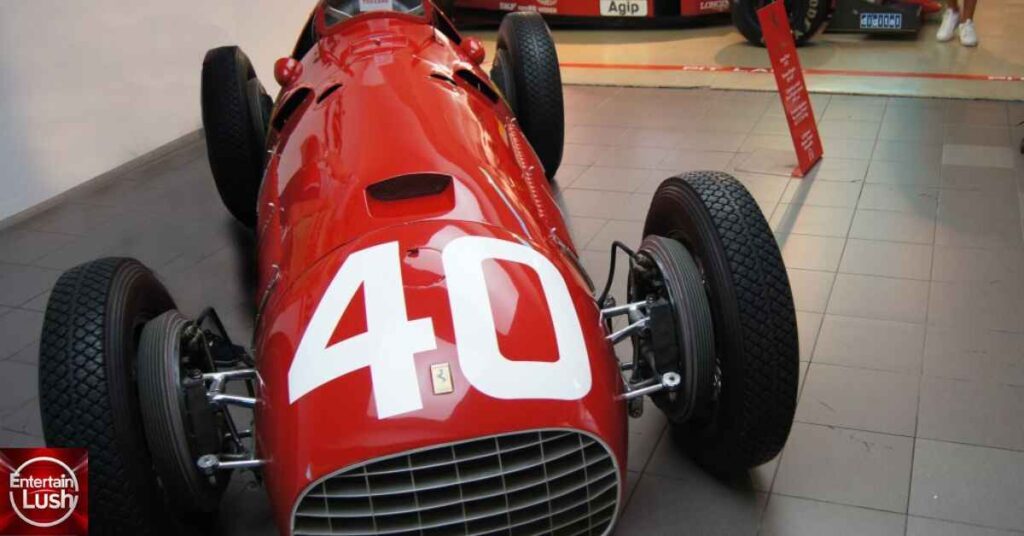
Ferrari achieved significant success in the early post-war years. In 1949, a Ferrari 166 MM won the prestigious 24 Hours of Le Mans. The company scored its first Formula One victory at the 1951 British Grand Prix. Alberto Ascari won Ferrari’s first F1 World Championship in 1952, repeating the feat in 1953. These early victories established Ferrari as a dominant force in post-war racing. They also laid the groundwork for the company’s legendary status in Formula One.
Also Read: Sava Schultz Age: A Comprehensive Look at the Social Media Star’s Life and Career
Reflections on How History Shaped Modern F1 Racing
World War II profoundly influenced the development of Formula One racing. The war years led to technological advancements that later benefited F1. The global conflict also reshaped the international racing landscape. Post-war economic challenges forced innovations in car design and team management. The war’s impact on automotive industries worldwide affected F1’s evolution. Understanding this historical context is crucial for appreciating modern Formula One’s structure and technology.
Lessons Learned from the WWII Era
The World War II era taught valuable lessons to the racing world. It showed the importance of adaptability in the face of global challenges. The war demonstrated how technology from other fields could benefit racing. The conflict’s aftermath highlighted the need for international cooperation in motorsports. These lessons influenced the formation of Formula One’s governing bodies. They also shaped the sport’s approach to innovation and global expansion in the following decades.
The Legacy of Pre-War and Wartime Racing Technology
Pre-war and wartime technologies left a lasting impact on Formula One. Aerodynamic principles from aircraft design improved car performance. Lightweight materials developed for military use enhanced car construction. Fuel innovations from the war years led to more powerful engines. These technological transfers accelerated F1’s development in the 1950s and beyond. Many modern F1 technologies can trace their roots to this pivotal period in history.
How the NJ Ferrari Incident Changed Perspectives
The story of the Ferraris stranded in New Jersey changed perspectives on racing history. It highlighted the global nature of motorsports even before World War II. The incident showed how political events could impact sports in unexpected ways. It also demonstrated the importance of preserving historical race cars. This event became a unique chapter in Ferrari’s history, adding to the brand’s mystique. It serves as a reminder of the complex interplay between racing, politics, and global events.
FAQ
What exactly happened to the F1 Ferraris in New Jersey during WWII?
In 1940, they shipped several Ferrari race cars to the US for an exhibition. When Italy entered the war, authorities froze the cars as Italian assets and stored them in New Jersey.
How did WWII affect the development of Formula One racing?
WWII halted European racing for years. However, it led to technological advancements that later benefited F1, like improved aerodynamics and materials.
Were the stranded Ferraris ever used in races again?
American collectors and racers bought some of the stranded Ferraris, while others returned to Italy. A few were used in post-war races.
How did American motorsports benefit from European cars during WWII?
American engineers and drivers gained access to advanced European racing technology. This exposure influenced the development of US race cars and sparked interest in European racing styles.
What role did Enzo Ferrari play in recovering the stranded F1 cars?
Enzo Ferrari initiated efforts to reclaim the cars in 1946. He oversaw negotiations with US authorities and coordinated the return or sale of the vehicles.
Conclusion
The story of WWII F1 Ferraris stuck in New Jersey is a unique chapter in racing history. It shows how global events can impact sports in unexpected ways. These stranded cars became a bridge between European and American racing cultures. Their journey highlights the resilience of the motorsport community. Today, this incident serves as a fascinating footnote in the evolution of Formula One racing.
Jake is the dynamic author of the entertainment section on Entertainlush.com. With a deep passion for gaming and entertainment, he delivers insightful content that keeps readers engaged and informed. Specializing in the latest trends, reviews, and updates in gaming and entertainment, Jake brings a wealth of knowledge and a keen eye for detail to every piece. Whether you’re a gaming enthusiast or a pop culture aficionado, Jake’s articles offer valuable perspectives and up-to-date information to enhance your entertainment experience.

